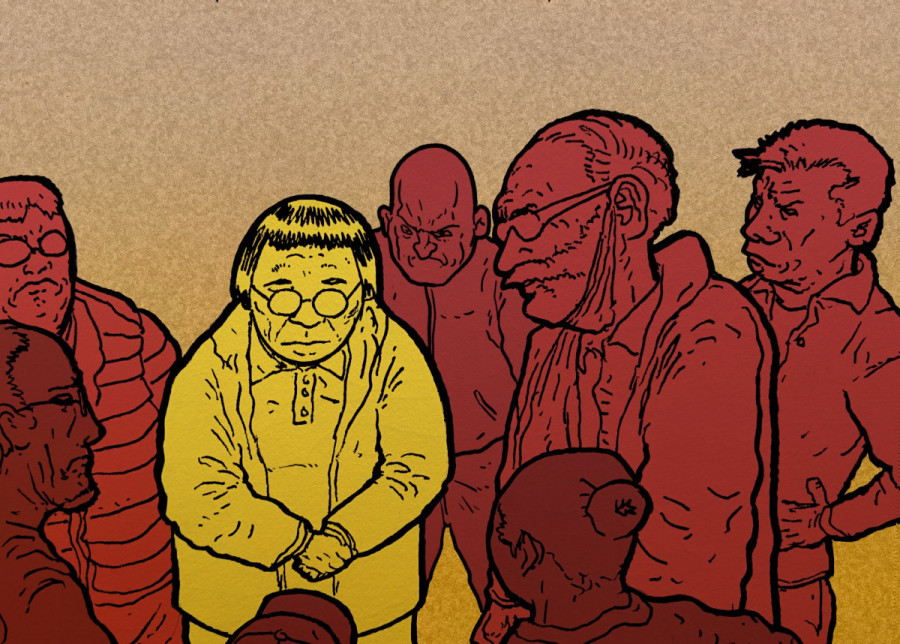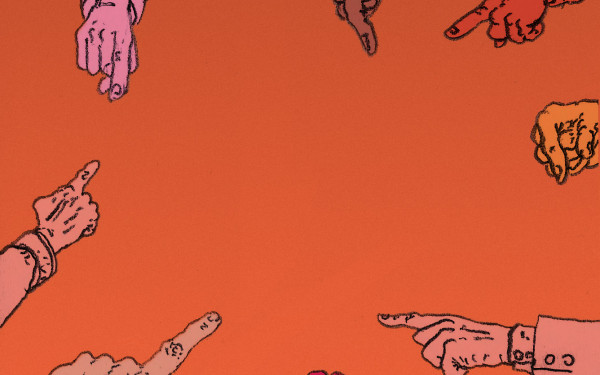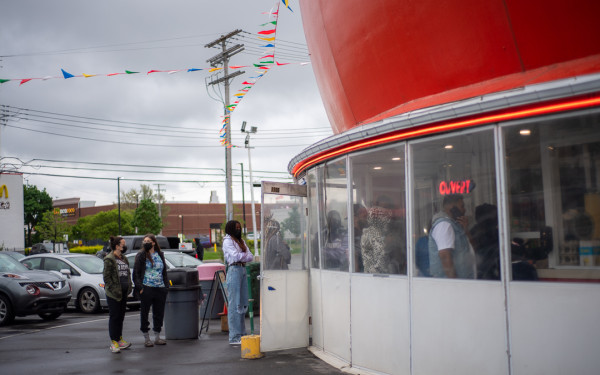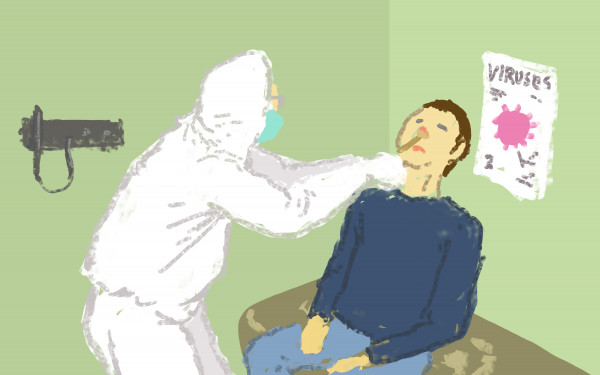Dear allies of the Asian community: Bystander silence is louder than hate speech
As an Asian woman, I’m exhausted; I just want people to care
When I watched the video of a 65-year-old Filipino woman violently attacked in NYC on March 29, something in my mind snapped.
From a luxury building’s lobby surveillance camera, Vilma Kari is seen walking alone, on her way to church. She appears to slow down, before a man attacks her, knocking her to the ground. He proceeds to kick her in the head and face repeatedly before he hurries away. Throughout the attack, a delivery man watches through the glass entrance of the building lobby. After the attack, two building personnel, one of them a security guard, walked slowly to the front door, and closed it as Kari struggled to sit up.
Just a day earlier, a viral TikTok video showed a man hurling anti-Asian hate speech at a young Asian woman on the STM in Montreal. At one point, the man attempted to physically engage with the victim and tried to take her phone. Later, he reaches into his jacket, and his hand emerges, mimicking a pointed gun. Dozens of riders looked on, but not a single person intervened. The victim said in an interview that nobody made eye contact with her after the incident and that she had never felt so alone.
Since the beginning of this year, Asian communities all over North America have been experiencing a surge in racially motivated hate crimes. Many have drawn connections to a rise in anti-Asian sentiment with Trump’s labeling of COVID-19 as the “China Virus” and “Kung Flu.” Many others have also rightfully reminded us that anti-Asian racism has been prevalent throughout both American and Canadian histories, and that scapegoating Asians was nothing new. In Montreal’s own history, Asians were denied access to “white” hospitals during the 1918 Spanish Flu. Despite ongoing stay-at-home orders across North America, Asian communities are acutely aware that the surge in racial violence has yet to end.
Chats and texts among my Asian-American and Asian-Canadian friends are dominated by anxieties over the safety of our elders. We share resources to protect our local Chinatowns and donate to so many Go Fund Me campaigns that we've lost count. We remind each other to take breaks—to step away from the barrage of images of violence against our community in order to preserve our own mental health.
One day, my husband came home with bear spray and said, “One for you, one for my mom.”
That afternoon, I carried shattered pieces of my heart to march against anti-Asian racism at Cabot Square as a journalist first, and Asian woman second. That afternoon, thousands of Montrealers marched for the safety of our community, their solidarity temporarily reviving my broken spirit.
Right now, following Asian influencers to diversify your social media feed is not enough. Passively reposting infographics and using #StopAsianHate is not enough. Texting your Asian friends with check in messages is not enough. What we urgently need is a collective effort in standing up against anti-Asian harassment.
While online activism is important, offline allyship is far more impactful. If you hear anyone calling COVID-19 the “Chinese Virus” or blaming the pandemic on Asians, educate them on why that’s racist and harmful. When people of Asian descent speak out about the violence against their community, make every effort to listen and never center your individual perspective in their pain.
The victim said in an interview that nobody made eye contact with her after the incident and that she had never felt so alone.
Public spaces feel increasingly unsafe for Asians. In Montreal, the Asian Allies Friendship Facebook group provides direct community support by connecting volunteers with members of the Asian community who feel unsafe walking alone. Other community-centered mutual aid includes GoFundMe campaigns that crowdfund Uber rides for those who cannot connect with a volunteer, as well as relief funds for victims of hate crimes.
Most importantly—and I cannot stress this enough—if you see anyone being harassed, provide bystander support. Sign up for free bystander intervention training and identify your preferred intervention method among the 5Ds: Distract, Delegate, Document, Delay or Direct. If you’re unable to intervene, seek help from someone who can safely do so. Always ask victims whether they’re okay, and help document the incident in any way you can. If it is safe to do so, take photos or video, and write down any important details about the incident.
According to an international study on public harassment conducted by Cornell University and NGO Holla Back!, 79 per cent of victims said it improved the situation when a witness intervened in an attack. But only 25 per cent of victims say that someone intervened in a situation where there was harassment.
The two consecutive hate crimes in Times Square and on Montreal’s STM feature something far more dangerous than the physical attacks themselves—they revealed an indifference toward human suffering. When videos of hate crimes began to surface regularly, I prepared myself for increasingly violent footage—but I could have never prepared myself for the brutal sting of cold, silent bystanders. We cannot allow this apathy to be normalized.
As an Asian woman who is exhausted, scared and hopeless, I am asking for your attention, support and aid. I am asking you to do your part in ensuring Asians no longer have to endure the singular heartache of loud, unrelenting disregard for our safety and dignity.
If there is ever a moment where you feel conflicted when witnessing anti-Asian hate crimes, I implore you to remember the words of activist and Holocaust survivor Eli Wiesel: “The opposite of love is not hate, it’s indifference.”


_600_832_s.png)


_600_375_s_c1.png)

